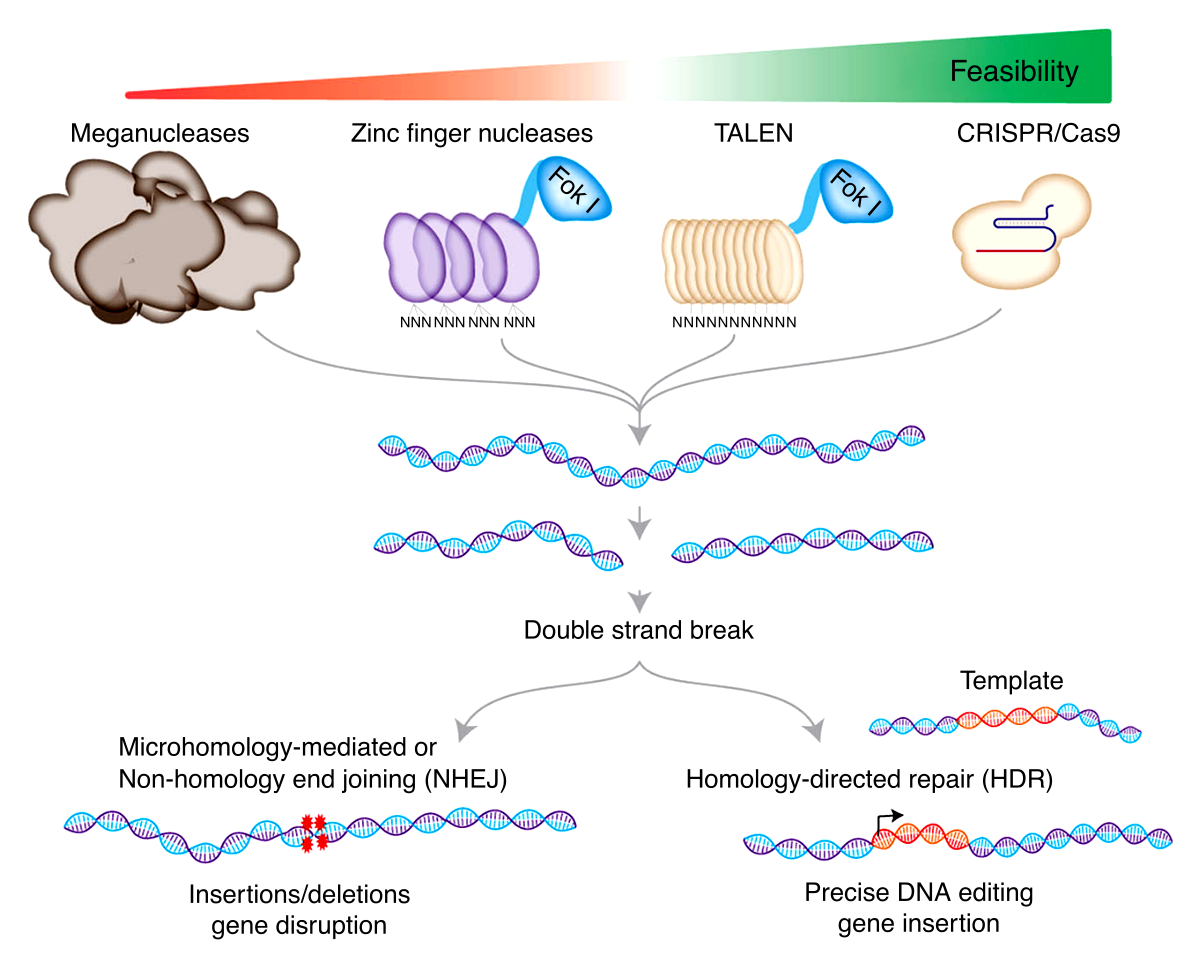
Genome editing Methods explained
In 1970s, the development of genetic engineering – manipulation of DNA or RNA established a novel frontier in genome editing (1). Over the past few years, the development of genome editing has revolutionized research on the human genome, which has helped researchers to better understand the contribution of gene product to a disease in an organism.
Genome editing methods:
Genome editing can be achieved in vitro by delivering the editing machinery, which add and corrects genes as well as performs other highly targeted genomic modifications. Targeted DNA alterations begin with the generation of nuclease-induced double stranded breaks which lead to the stimulation of highly efficient recombination mechanisms of cellular DNA in mammalian cells (2).
Nucleases-induced DNA breaks can be repaired by one of the two major mechanisms that occurs in almost all cell types: Homology-directed repair (HDR) and non-homologous end joining (NHEJ) resulting in target gene integration or gene disruptions (3,4).

Based on cell engineering or bacterial enzymes, the development of genome editing technologies has opened the possibility of directly targeting and modifying genomic sequences in almost all eukaryotic cells. Genome editing has also extended horizons to elucidate the contribution of genetics to diseases and has begun to show extraordinary potential in a variety of fields of applied sciences, from biotechnology to biomedical research (5).
References:
1. Rothstein, R. J. One-step gene disruption in yeast. Meth. Enzymol. 101, 202–211 (1983).
2. Ghosh, D., Venkataramani, P., Nandi, S. & Bhattacharjee, S. CRISPR-Cas9 a boon or bane: the bumpy road ahead to cancer therapeutics. Cancer Cell Int. 19, 12 (2019).
3. Gaj, T., Gersbach, C. A. & Barbas, C. F. 3rd ZFN, TALEN, and CRISPR/Cas-based methods for genome engineering. Trends Biotechnol. 31, 397–405 (2013).
4. O’Driscoll, M. & Jeggo, P. A. The role of double-strand break repair—insights from human genetics. Nat. Rev. Genet. 7, 45–54 (2006).
5. Li, H., Yang, Y., Hong, W. et al. Applications of genome editing technology in the targeted therapy of human diseases: mechanisms, advances, and prospects. Sig Transduct Target Ther 5, 1 (2020).



